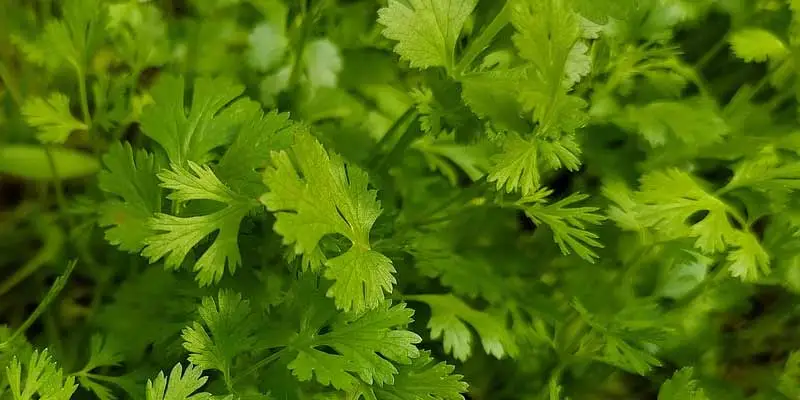Cilantro is a popular herb, also known as coriander. It has a fresh, slightly citrusy flavor and can be used in many ways. It’s great in Mexican dishes and Asian stir-fries, but it also pairs well with other herbs like parsley or dill.
In this article, we’ll teach you everything you need to know about harvesting cilantro at the right time so that you can enjoy its fresh taste for as long as possible!
When To Harvest Cilantro
Cilantro is a quick-growing herb that you can start harvesting after only 3 weeks. Before the plant becomes root bound, you should pick cilantro at least every other day to keep it growing strong and healthy.
When cilantro plants are 6 to 8 inches tall, it’s time to harvest them for their leaves (the tender young ones). For more mature cilantro plants, wait until they reach 12 inches tall before starting your harvest process.
As long as the soil isn’t too hot or too cold, it will be fine if your plant gets leggy over time – just cut back on watering until new growth appears again!
When Is The Best Month To Harvest Cilantro?
Cilantro should be picked when it reaches full maturity so that its flavor is at its peak potential. You can pick cilantro leaves at any time during its growing season but they will have more flavor if you wait until late summer or early fall when temperatures begin dropping off in temperature.
The best time to harvest cilantro is between September and October because this is when they reach their maximum taste potential before frost hits them hard during winter months when temperatures drop below 32 degrees Fahrenheit at night time which kills the herb.
Can You Harvest Cilantro Too Early?
You can definitely harvest cilantro too early!
However, the problem with harvesting cilantro too early is that it will not taste as good as it would if you waited until later in the growing process. When you harvest cilantro too early, you will not get all of the oils from inside of the plant which gives it its unique flavor and aroma.
If you want to harvest cilantro at an earlier stage in order to get more leaves on your plant, simply pinch off some of the outer leaves when they are still small and tender. This way you can use them while they are fresh and flavorful or freeze them for later use when they are no longer available locally at your grocery store or farmer’s market.
In addition, it’s a good idea to water cilantro often to help the herb grow more quickly.
How to Harvest Cilantro
When it comes time to harvest cilantro, you have some options. The following are some methods to harvest cilantro:
Cutting using scissors – This method is suitable for those who want to harvest a small amount of cilantro. Cut the stems using sharp scissors or pruning shears about 1 inch above the soil surface. The leaves will then fall off easily.
Hand pulling – To use this method, simply use your hands to pull out the entire plant from its roots. Pulling out all parts of the plant will ensure that there are no stragglers left behind in your garden beds or pots. This method works well if you have planted cilantro in pots because it will not damage your pots when doing so.
Storing Cilantro After Harvesting

There are a few ways to store cilantro after harvesting. From freezing it, to making your own cilantro pesto, there are plenty of different options.
1. Store in Your Fridge
Storing fresh cilantro in the fridge is the most common way to keep it fresh. The best way to store cilantro is in its original packaging, which has a plastic bag inside of a cardboard box. This helps maintain the moisture level of the leaves while they are in storage. Place your cilantro in a plastic bag with holes punched into it so that excess water can drain out. Keep your cilantro in the vegetable drawer of your refrigerator and be sure not to place it near apples or potatoes as these foods produce ethylene gas, which can cause brown spots on your cilantro leaves.
2. Freeze Cilantro
Another option for preserving fresh cilantro is by freezing it for later use during the winter months when fresh herbs aren’t available locally or affordably at farmers’ markets or grocery stores. To do this, wash your cilantro leaves well and then dry them off with paper towels before placing them into freezer bags with all of their stems removed from each leaf; this will make it easier for you to remove them from their plastic bags once they’ve thawed out.
3. Make Pesto
Cilantro pesto is one of the most common ways to preserve cilantro because it can be frozen or refrigerated for up to two weeks without losing any of its flavor or nutrients. Cilantro pesto can also be used on sandwiches and pasta dishes as well as eaten straight from the jar!
Conclusion
When to harvest cilantro will depend on what you’ll be using them for and if you want the full aroma of the herb. For cooking foods that need a lot of flavors, wait until the herb is about 12 inches long before harvesting.


